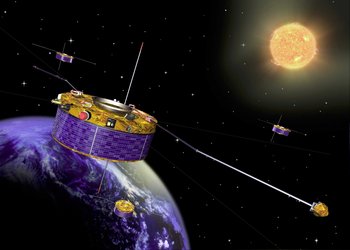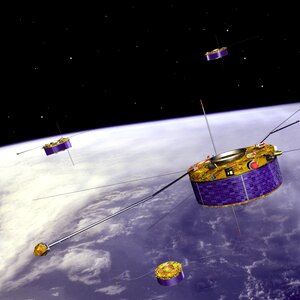Instruments II
Each of Cluster's four spacecraft carried an identical set of 11 instruments to investigate charged particles, electrical and magnetic fields. These were built by European and American instrument teams led by Principal Investigators.
Five of the instruments (DWP, EFW, STAFF, WBD, and WHISPER) were grouped together to form the 'Wave Experiment Consortium'. The remaining six are listed below.
ASPOC – Active Spacecraft Potential Control experiment
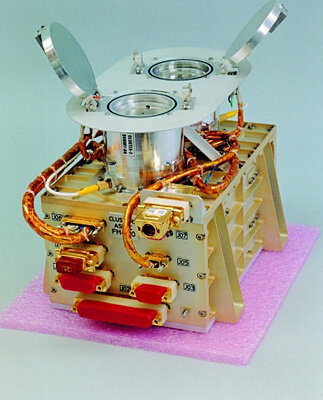
Principal Investigator: Klaus Torkar, Austria
Electrical charging of a Cluster spacecraft in orbit could have a severe impact on the performance of the scientific instruments. ASPOC emitted charged particles that cancelled out the electrical charge that the satellite acquired. The number of particles needed to do this was determined by other onboard instruments (EFW and PEACE), which recorded the spacecraft's electrical potential.
CIS – Cluster Ion Spectrometry experiment
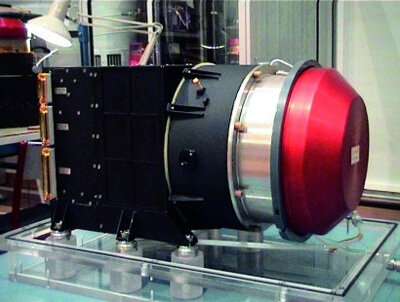
Principal Investigator: Iannis Dandouras, France/Greece
Analysed the composition, mass and distribution of particles captured by the spacecraft. CIS consisted of two different instruments – a Hot Ion Analyser (HIA) and a time-of-flight COmposition and DIstribution Function analyser (CODIF), plus a sophisticated instrument control and data processing system, which permitted extensive onboard data processing.
EDI – Electron Drift Instrument
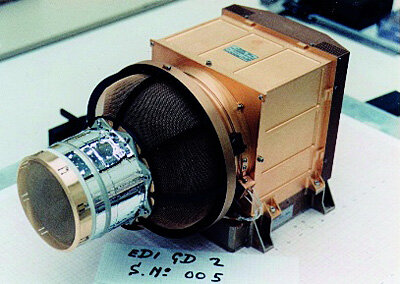
Principal Investigator: Roy B. Torbert, USA
EDI fired two beams of electrons into space around each spacecraft. The electrons travelled in orbits of 10 km or more before returning to receivers on the opposite side of the spacecraft. From the firing directions and the round-trip travel time, scientists could determine the strength of the electric and magnetic fields around each Cluster spacecraft.
FGM – Fluxgate Magnetometer
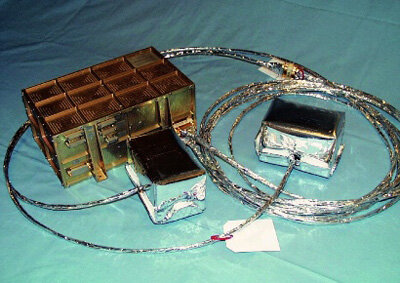
Principal Investigator: Chris Carr, UK
FGM was composed of two magnetometers that measured the magnetic fields encountered by Cluster. Located on a 5-m-long boom to avoid interference from the spacecraft, FGM could record measurements up to 67 times per second.
PEACE - Plasma Electron And Current Experiment
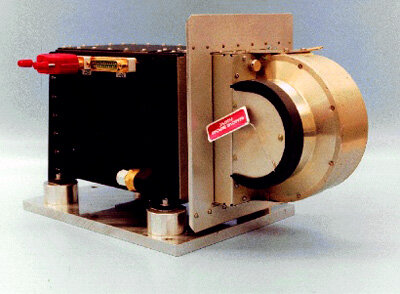
Principal Investigator: Andrew Fazakerley, UK
Like CIS, this experiment also sifted incoming particles. PEACE looked at electrons in the plasma that have low to medium energies, counted them and measured their direction of travel and speed.
RAPID – Research with Adaptive Particle Imaging Detectors
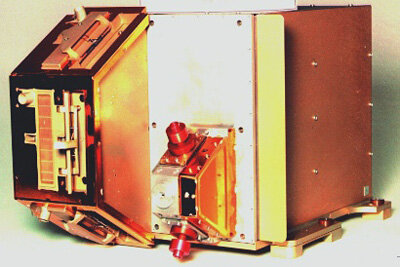
Principal Investigator: Patrick Daly, Germany
An advanced particle detector that recorded the highest energy electrons and charged particles entering it from space. The particles passed through pinholes to reach the detector, enabling it to build up a picture of where the particles came from.


